- Home
- Stephen Hawking
A Stubbornly Persistent Illusion Page 30
A Stubbornly Persistent Illusion Read online
Page 30
FIG. 16.
great as the one with two nodes. similarly, standing waves can have four, five, and more nodes. The wave-length in each case will depend on the number of nodes. This number can only be an integer and can
FIG. 17.
change only by jumps. The sentence, “the number of nodes in a standing wave is 3.576,” is pure nonsense. Thus the wave-length can only change discontinuously. Here, in this most classical problem, we recognize the familiar features of the quantum theory. The standing wave produced by a violin player is, in fact, still more complicated, being a mixture of very many waves with two, three, four, five, and more nodes and, therefore, a mixture of several wave-lengths. Physics can analyze such a mixture into the simple standing waves from which it is composed. Or, using our previous terminology, we could say that the oscillating string has its spectrum, just as an element emitting radiation. And, in the same way as for the spectrum of an element, only certain wave-lengths are allowed, all others being prohibited.
We have thus discovered some similarity between the oscillating cord and the atom emitting radiation. Strange as this analogy may seem, let us draw further conclusions from it and try to proceed with the comparison, once having chosen it. The atoms of every element are composed of elementary particles, the heavier constituting the nucleus, and the lighter the electrons. Such a system of particles behaves like a small acoustical instrument in which standing waves are produced.
Yet the standing wave is the result of interference between two or, generally, even more moving waves. If there is some truth in our analogy, a still simpler arrangement than that of the atom should correspond to a spreading wave. What is the simplest arrangement? In our material world, nothing can be simpler than an electron, an elementary particle, on which no forces are acting, that is, an electron at rest or in uniform motion. We could guess a further link in the chain of our analogy: electron moving uniformly → waves of a definite length. This was de Broglie’s new and courageous idea.
It was previously shown that there are phenomena in which light reveals its wave-like character and others in which light reveals its corpuscular character. After becoming used to the idea that light is a wave, we found, to our astonishment, that in some cases, for instance in the photoelectric effect, it behaves like a shower of photons. Now we have just the opposite state of affairs for electrons. We accustomed ourselves to the idea that electrons are particles, elementary quanta of electricity and matter. Their charge and mass were investigated. If there is any truth in de Broglie’s idea, then there must be some phenomena in which matter reveals its wave-like character. At first, this conclusion, reached by following the acoustical analogy, seems strange and incomprehensible. How can a moving corpuscle have anything to do with a wave? But this is not the first time we have faced a difficulty of this kind in physics. We met the same problem in the domain of light phenomena.
Fundamental ideas play the most essential role in forming a physical theory. Books on physics are full of complicated mathematical formulae. But thought and ideas, not formulae, are the beginning of every physical theory. The ideas must later take the mathematical form of a quantitative theory, to make possible the comparison with experiment. This can be explained by the example of the problem with which we are now dealing. The principal guess is that the uniformly moving electron will behave, in some phenomena, like a wave. Assume that an electron or a shower of electrons, provided they all have the same velocity, is moving uniformly. The mass, charge, and velocity of each individual electron is known. If we wish to associate in some way a wave concept with a uniformly moving electron or electrons, our next question must be: what is the wave-length? This is a quantitative question and a more or less quantitative theory must be built up to answer it. This is indeed a simple matter. The mathematical simplicity of de Broglie’s work, providing an answer to this question, is most astonishing. At the time his work was done, the mathematical technique of other physical theories was very subtle and complicated, comparatively speaking. The mathematics dealing with the problem of waves of matter is extremely simple and elementary but the fundamental ideas are deep and far-reaching.
Previously, in the case of light waves and photons, it was shown that every statement formulated in the wave language can be translated into the language of photons or light corpuscles. The same is true for electronic waves. For uniformly moving electrons, the corpuscular language is already known. But every statement expressed in the corpuscular language can be translated into the wave language, just as in the case of photons. Two clews laid down the rules of translation. The analogy between light waves and electronic waves or photons and electrons is one clew. We try to use the same method of translation for matter as for light. The special relativity theory furnished the other clew. The laws of nature must be invariant with respect to the Lorentz and not to the classical transformation. These two clews together determine the wave-length corresponding to a moving electron. It follows from the theory that an electron moving with a velocity of, say, 10,000 miles per second, has a wave-length which can be easily calculated, and which turns out to lie in the same region as the X-ray wave-lengths. Thus we conclude further that if the wave character of matter can be detected, it should be done experimentally in an analogous way to that of X rays.
Imagine an electron beam moving uniformly with a given velocity, or, to use the wave terminology, a homogeneous electronic wave, and assume that it falls on a very thin crystal, playing the part of a diffraction grating. The distances between the diffracting obstacles in the crystal are so small that diffraction for X rays can be produced. One might expect a similar effect for electronic waves with the same order of wave-length. A photographic plate would register this diffraction of electronic waves passing through the thin layer of crystal. Indeed, the experiment produces what is undoubtedly one of the great achievements of the theory: the phenomenon of diffraction for electronic waves. The similarity between the diffraction of an electronic wave and that of an X ray is particularly marked as seen from a comparison of the patterns in Plate III. We know that such pictures enable us to determine the wave-lengths of X rays. The same holds good for electronic waves. The diffraction pattern gives the length of a wave of matter and the perfect quantitative agreement between theory and experiment confirms the chain of our argument splendidly.
Our previous difficulties are broadened and deepened by this result. This can be made clear by an example similar to the one given for a light wave. An electron shot at a very small hole will bend like a light wave. Light and dark rings appear on the photographic plate. There may be some hope of explaining this phenomenon by the interaction between the electron and the rim, though such an explanation does not seem to be very promising. But what about the two pinholes? Stripes appear instead of rings. How is it possible that the presence of the other hole completely changes the effect? The electron is indivisible and can, it would seem, pass through only one of the two holes. How could an electron passing through a hole possibly know that another hole has been made some distance away?
We asked before: what is light? Is it a shower of corpuscles or a wave? We now ask: what is matter, what is an electron? Is it a particle or a wave? The electron behaves like a particle when moving in an external electric or magnetic field. It behaves like a wave when diffracted by a crystal. With the elementary quanta of matter we came across the same difficulty that we met with in the light quanta. One of the most fundamental questions raised by recent advance in science is how to reconcile the two contradictory views of matter and wave. It is one of those fundamental difficulties which, once formulated, must lead, in the long run, to scientific progress. Physics has tried to solve this problem. The future must decide whether the solution suggested by modern physics is enduring or temporary.
PROBABILITY WAVES
If, according to classical mechanics, we know the position and velocity of a given material point and also what external forces are acting, we can predict, from the mechanical la
ws, the whole of its future path. The sentence: “The material point has such-and-such position and velocity at such-and-such an instant,” has a definite meaning in classical mechanics. If this statement were to lose its sense, our argument about foretelling the future path would fail.
In the early nineteenth century, scientists wanted to reduce all physics to simple forces acting on material particles that have definite positions and velocities at any instant. Let us recall how we described motion when discussing mechanics at the beginning of our journey through the realm of physical problems. We drew points along a definite path showing the exact positions of the body at certain instants and then tangent vectors showing the direction and magnitude of the velocities. This was both simple and convincing. But it cannot be repeated for our elementary quanta of matter, that is electrons, or for quanta of energy, that is photons. We cannot picture the journey of a photon or electron in the way we imagined motion in classical mechanics. The example of the two pinholes shows this clearly. Electron and photon seem to pass through the two holes. It is thus impossible to explain the effect by picturing the path of an electron or a photon in the old classical way.
We must, of course, assume the presence of elementary actions, such as the passing of electrons or photons through the holes. The existence of elementary quanta of matter and energy cannot be doubted. But the elementary laws certainly cannot be formulated by specifying positions and velocities at any instant in the simple manner of classical mechanics.
Let us, therefore, try something different. Let us continually repeat the same elementary processes. One after the other, the electrons are sent in the direction of the pinholes. The word “electron” is used here for the sake of definiteness; our argument is also valid for photons.
The same experiment is repeated over and over again in exactly the same way; the electrons all have the same velocity and move in the direction of the two pinholes. It need hardly be mentioned that this is an idealized experiment which cannot be carried out in reality but may well be imagined. We cannot shoot out single photons or electrons at given instants, like bullets from a gun.
The outcome of repeated experiments must again be dark and light rings for one hole and dark and light stripes for two. But there is one essential difference. In the case of one individual electron, the experimental result was incomprehensible. It is more easily understood when the experiment is repeated many times. We can now say: light stripes appear where many electrons fall. The stripes become darker at the place where fewer electrons are falling. A completely dark spot means that there are no electrons. We are not, of course, allowed to assume that all the electrons pass through one of the holes. If this were so it could not make the slightest difference whether or not the other is covered. But we already know that covering the second hole does make a difference. Since one particle is indivisible we cannot imagine that it passes through both the holes. The fact that the experiment was repeated many times points to another way out. Some of the electrons may pass through the first hole and others through the second. We do not know why individual electrons choose particular holes, but the net result of repeated experiments must be that both pinholes participate in transmitting the electrons from the source to the screen. If we state only what happens to the crowd of elecrons when the experiment is repeated, not bothering about the behavior of individual particles, the difference between the ringed and the striped pictures becomes comprehensible. By the discussion of a sequence of experiments a new idea was born, that of a crowd with the individuals behaving in an unpredictable way. We cannot foretell the course of one single electron, but we can predict that, in the net result, the light and dark stripes will appear on the screen.
Let us leave quantum physics for the moment.
We have seen in classical physics that if we know the position and velocity of a material point at a certain instant and the forces acting upon it, we can predict its future path. We also saw how the mechanical point of view was applied to the kinetic theory of matter. But in this theory a new idea arose from our reasoning. It will be helpful in understanding later arguments to grasp this idea thoroughly.
There is a vessel containing gas. In attempting to trace the motion of every particle one would have to commence by finding the initial states, that is, the initial positions and velocities of all the particles. Even if this were possible, it would take more than a human lifetime to set down the result on paper, owing to the enormous number of particles which would have to be considered. If one then tried to employ the known methods of classical mechanics for calculating the final positions of the particles, the difficulties would be insurmountable. In principle, it is possible to use the method applied for the motion of planets, but in practice this is useless and must give way to the method of statistics. This method dispenses with any exact knowledge of initial states. We know less about the system at any given moment and are thus less able to say anything about its past or future. We become indifferent to the fate of the individual gas particles. Our problem is of a different nature. For example: we do not ask, “What is the speed of every particle at this moment?” But we may ask: “How many particles have a speed between 1000 and 1100 feet per second?” We care nothing for individuals. What we seek to determine are average values typifying the whole aggregation. It is clear that there can be some point in a statistical method of reasoning only when the system consists of a large number of individuals.
By applying the statistical method we cannot foretell the behavior of an individual in a crowd. We can only foretell the chance, the probability, that it will behave in some particular manner. If our statistical laws tell us that one-third of the particles have a speed between 1000 and 1100 feet per second, it means that by repeating our observations for many particles, we shall really obtain this average, or in other words, that the probability of finding a particle within this limit is equal to one-third.
Similarly, to know the birth rate of a great community does not mean knowing whether any particular family is blessed with a child. It means a knowledge of statistical results in which the contributing personalities play no role.
By observing the registration plates of a great many cars we can soon discover that one-third of their numbers are divisible by three. But we cannot foretell whether the car which will pass in the next moment will have this property. Statistical laws can be applied only to big aggregations, but not to their individual members.
We can now return to our quantum problem.
The laws of quantum physics are of a statistical character. This means: they concern not one single system but an aggregation of identical systems; they cannot be verified by measurement of one individual, but only by a series of repeated measurements.
Radioactive disintegration is one of the many events for which quantum physics tries to formulate laws governing the spontaneous transmutation from one element to another. We know, for example, that in 1600 years half of one gram of radium will disintegrate, and half will remain. We can foretell approximately how many atoms will disintegrate during the next half-hour, but we cannot say, even in our theoretical descriptions, why just these particular atoms are doomed. According to our present knowledge, we have no power to designate the individual atoms condemned to disintegration. The fate of an atom does not depend on its age. There is not the slightest trace of a law governing their individual behavior. Only statistical laws can be formulated, laws governing large aggregations of atoms.
Take another example. The luminous gas of some element placed before a spectroscope shows lines of definite wave-length. The appearance of a discontinuous set of definite wave-lengths is characteristic of the atomic phenomena in which the existence of elementary quanta is revealed. But there is still another aspect of this problem. Some of the spectrum lines are very distinct, others are fainter. A distinct line means that a comparatively large number of photons belonging to this particular wave-length are emitted; a faint line means that a comparatively small number of photons belon
ging to this wave-length are emitted. Theory again gives us statements of a statistical nature only. Every line corresponds to a transition from higher to lower energy level. Theory tells us only about the probability of each of these possible transitions, but nothing about the actual transition of an individual atom. The theory works splendidly because all these phenomena involve large aggregations and not single individuals.
It seems that the new quantum physics resembles somewhat the kinetic theory of matter, since both are of a statistical nature and both refer to great aggregations. But this is not so! In this analogy an understanding not only of the similarities but also of the differences is most important. The similarity between the kinetic theory of matter and quantum physics lies chiefly in their statistical character. But what are the differences?
If we wish to know how many men and women over the age of twenty live in a city, we must get every citizen to fill out a form under the headings: “male,” “female,” and “age.” Provided every answer is correct, we can obtain, by counting and segregating them, a result of a statistical nature. The individual names and addresses on the forms are of no account. Our statistical view is gained by the knowledge of individual cases. Similarly, in the kinetic theory of matter, we have statistical laws governing the aggregation, gained on the basis of individual laws.
But in quantum physics the state of affairs is entirely different. Here the statistical laws are given immediately. The individual laws are discarded. In the example of a photon or an electron and two pinholes we have seen that we cannot describe the possible motion of elementary particles in space and time as we did in classical physics. Quantum physics abandons individual laws of elementary particles and states directly the statistical laws governing aggregations. It is impossible, on the basis of quantum physics, to describe positions and velocities of an elementary particle or to predict its future path as in classical physics. Quantum physics deals only with aggregations, and its laws are for crowds and not for individuals.

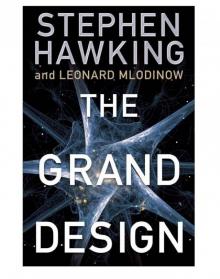 The Grand Design
The Grand Design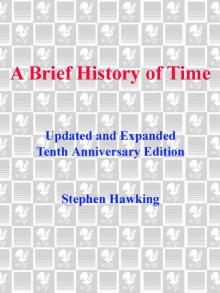 A Brief History of Time
A Brief History of Time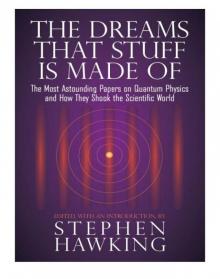 The Dreams That Stuff is Made of
The Dreams That Stuff is Made of My Brief History
My Brief History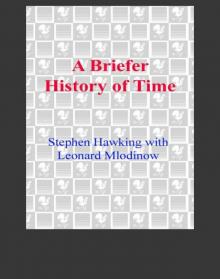 A Briefer History of Time
A Briefer History of Time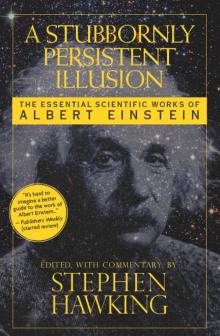 A Stubbornly Persistent Illusion
A Stubbornly Persistent Illusion George and the Blue Moon
George and the Blue Moon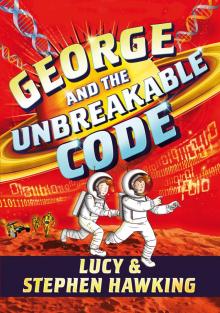 George and the Unbreakable Code
George and the Unbreakable Code Brief Answers to the Big Questions
Brief Answers to the Big Questions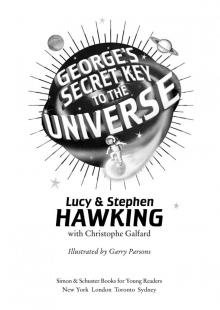 George's Secret Key to the Universe
George's Secret Key to the Universe